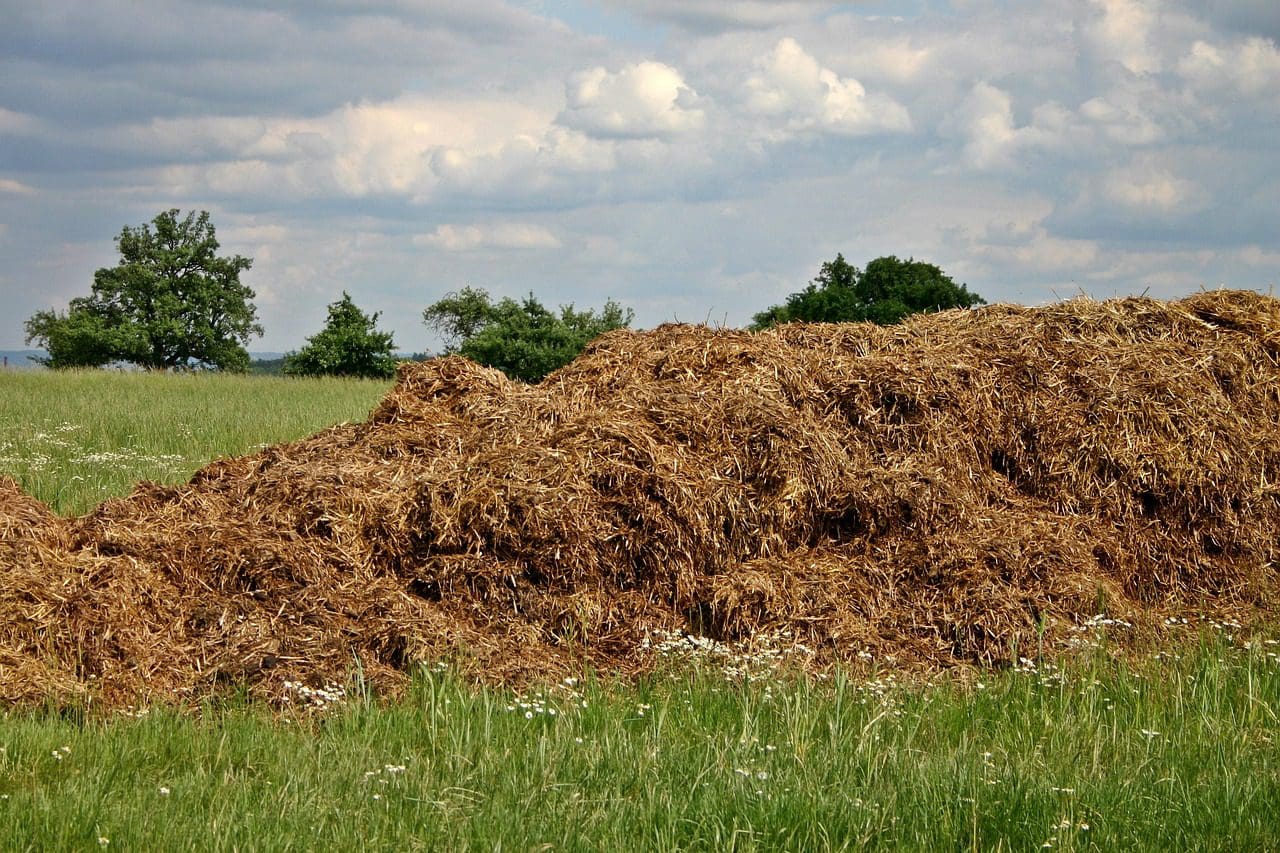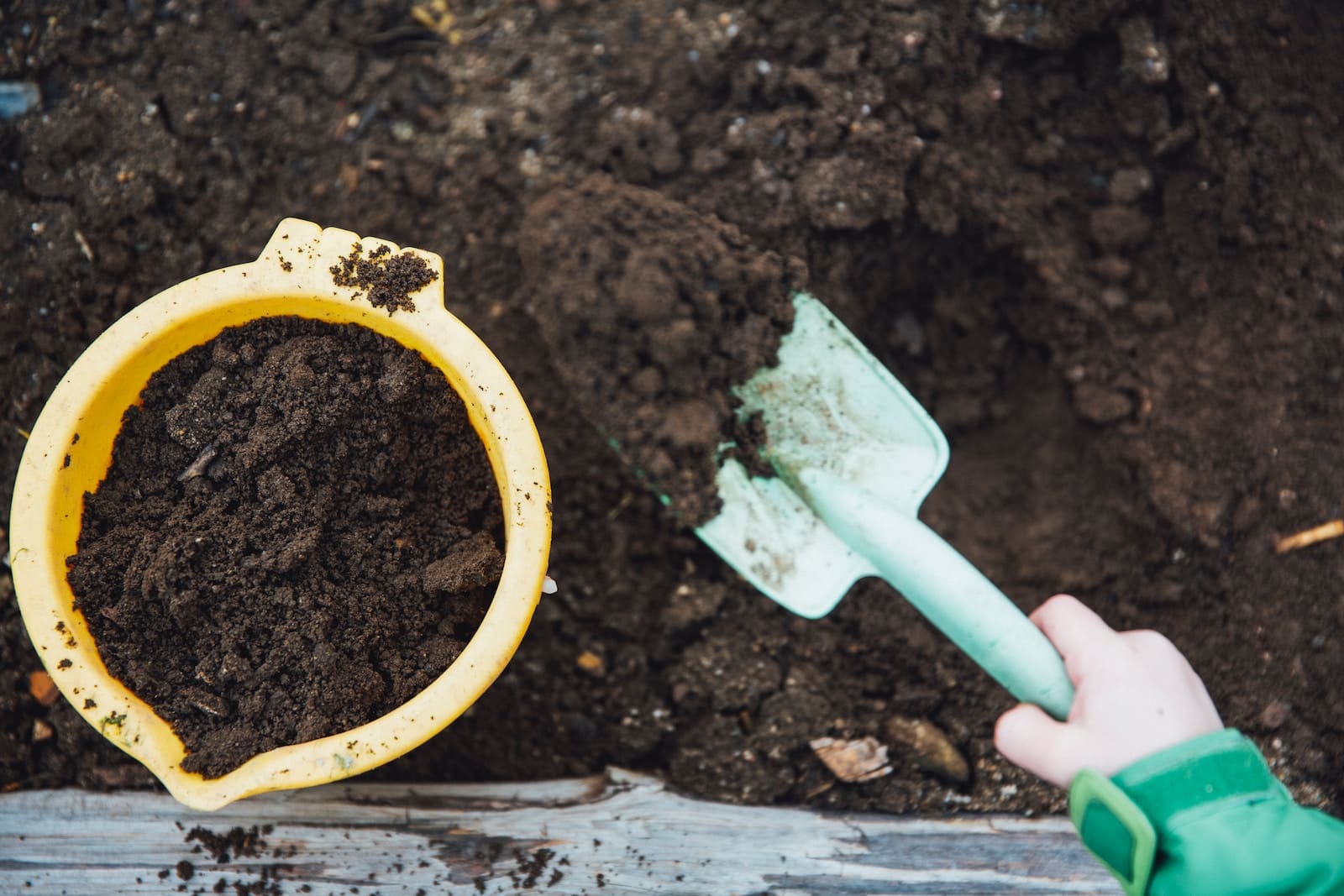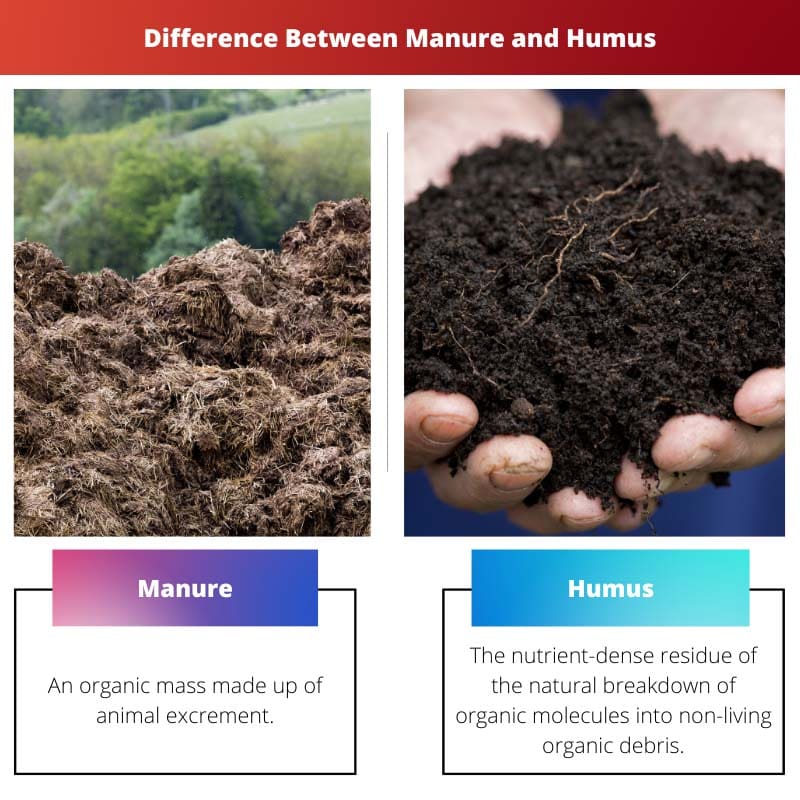Both manure and humus compost enriches plants and impact their growth, absorb nutrients, and resist diseases, although they do it in different ways. The source materials and processing method employed to influence the effectiveness of manure and humus compost, as well as the condition of the original soil.
When intending to utilize manure or humus compost to enhance and enrich the soil in your garden, keep these points in mind.
Key Takeaways
- Manure is an organic matter derived from animal waste, whereas humus is a decomposed organic matter from plant and animal sources.
- Manure is used as a natural fertilizer, providing essential nutrients to plants, while humus improves soil structure, water retention, and overall fertility.
- Manure can contain pathogens and odors, while humus is odorless and free of harmful microorganisms.
Manure vs Humus
Manure is the organic material that comes from animal waste, such as cow manure. It is used as a fertilizer to provide plants with nutrients. Humus, is the dark, organic material made by breaking down of plant and animal matter. It is a natural component of soil and is rich in nutrients.

Manures are a form of natural fertilizer. To generate manure, farmers decompose plant and animal waste.
Manure is the result of this breakdown, in organic matter. Nutrients are low in manure. Rather, it enriches the soil with humus, making it more fruitful.
This improves the soil’s physical properties, allowing it to retain more moisture and increase aeration.
Humus is the percentage of soil organic matter that is amorphous and lacks the cellular cake structure that plants, microorganisms, and animals have. Humus has a substantial impact on the bulk density of soil and helps it retain moisture and minerals.
Comparison Table
| Parameters of Comparison | Manure | Humus |
|---|---|---|
| Meaning | An organic mass made up of animal excrement. | The nutrient-dense residue of the natural breakdown of organic molecules into non-living organic debris. |
| Nutrients | Nitrogen, phosphorus, and potassium | Magnesium and sulfur nutrients. |
| Main Benefits | Increases soil microbial production | Increases water penetration. |
| Color | Dark green | Dark brown |
| Name of Process | Composting | Humification |
| Uses | Used as a fertilizer | Preservation of soil |
What is Manure?
Composted or matured manure is a powerhouse of nutrients and beneficial bacteria. It is high in nitrogen, phosphorus, and other minerals that are produced annually for plant use.
Except for synthetic fertilizers, manure improves soil structure and moisture retention based on the quantity of humus matter in the manure.
Aside from being used as a soil fertilizer, manure also assists in the decomposition of plant waste. Manure’s high nitrogen concentration stimulates soil microbes that break down humus materials.
Fresh manure should be composted for at least six months before utilizing it, or it should be sprinkled on garden beds in the fall for spring planting. Because many farms need to get dispose of their animal waste, it might be simple to locate manure for sale, or if you have your livestock, your animals will create it anyhow.
The amount of nutrients in manures varies depending on the type of animals and the amount of bedding mixed in. Non-organic agricultural manure may include pesticide, antibiotic, and other pharmaceutical residues that might impair plant growth.
Manure is an excellent soil conditioner. It serves as a field residue when applied to agricultural fields.
Producers can sell the manure to those who want to boost the fertility of their land. As a result, it has the potential to provide revenue for farmers.

What is Humus?
Humus compost, which is formed of degraded plant material, enhances soil quality by clumping soil particles and creating excellent tilth. Both clay and sandy soils benefit from the addition of humus compost.
Rich in organic content, composted manure may improve soil structure, albeit to a smaller amount than humus compost.
The process of forming humus is divided into two parts. First, the organic and mineral compounds in the soil decompose.
Following that, completely new mixtures of these broken-down compounds emerge. This results in the first stages of the humus. The production of humus is a biochemical phenomenon.
In the Earth’s upper crust, just 10-30 cm of humus-containing soil is accessible.
Only once all components have been completely disintegrated into the constituents’ carbon, nitrogen, potassium, and magnesium can building on what is now commonly known as humus begin. Humus is very vital in the soil structure. The best soil contains humus and has a granular, crumbly texture.
This permits oxygen and carbon to circulate through the soil and nourish the root growth.
Both clay and sandy soils benefit from the addition of humus compost. Humus cannot be considered an actual material, but rather a process — a creation, composed of a plethora of continually changing components.

Main Differences Between Manure and Humus
- Manure is an organic mass made up of animal excrement, discarded feed, and so on. Meanwhile, humus is the organic element of soil generated by soil microbes decomposing leaves and other plant matter
- Manure contains the nutrients of nitrogen and potassium while humus consists of phosphorus, potassium, magnesium, sulfur, calcium, and nitrogen
- Manure boosts soil microbial activity, which increases trace mineral availability and improves plant nutrition. While humus maintains moisture levels and allows water to penetrate down to the roots.
- Manure is dark green in color and humus is dark brown.
- The process of forming manure is called composting and humification in the process of forming humus.
- Manure is used as a fertilizer to improve soil fertility. Whereas a deposit of humus on top of the soil shelters it during the winter and helps to warm it up for planting by retaining radiation from the sun in early spring.
